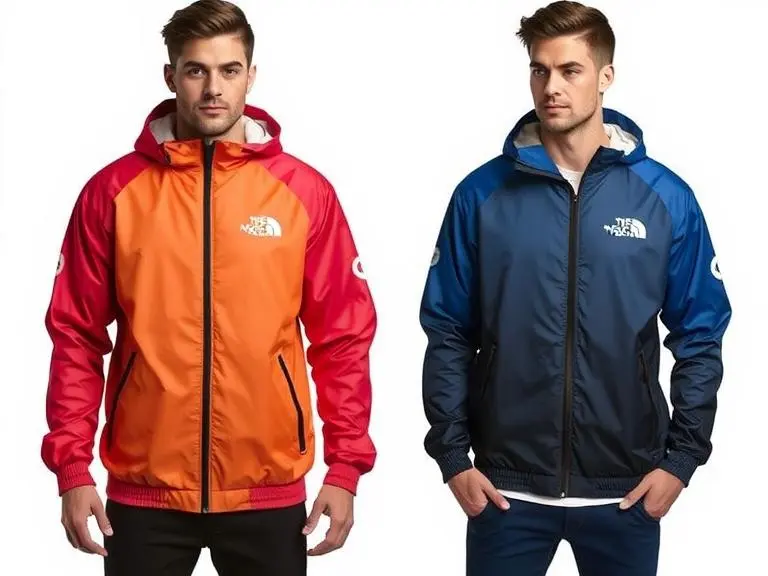Custom jackets and windbreakers remain top choices for Singapore organisations, schools, and lifestyle brands seeking practical, stylish outerwear. Whether you’re ordering team jackets for a corporate roadshow, designing varsity pieces for a school, or producing windbreakers for outdoor events, knowing the best production methods and finishes will save time and money while delivering professional results. This guide explains the most common jacket types, compares printing and embroidery, and shows how PrinteeSG’s services can help you get the right result for your project. Jackets come in many styles, but four stand out in Singapore. The classic varsity jacket blends nostalgic style with school spirit and is often chosen for alumni groups and clubs. Lightweight windbreakers are favoured by event organisers and outdoor teams for their weather resistance and packability. Softshell jackets offer a balance of breathability and protection for active staff, while insulated jackets serve frontline workers in cooler environments or as premium corporate gifts. For school and club projects, varsity jacket printing produces bold lettered backs and contrasting sleeves that capture the traditional look. For corporate branding, windbreakers with subtle logos and tonal colourways create a modern, versatile uniform that travels well across events and seasons. Selecting the right printing method depends on fabric and design complexity. High-density woven fabrics and cotton blends accept screen printing and embroidery well, giving durable, tactile results. Polyester shells used in technical windbreakers often perform best with dye-sublimation or DTF processes that bond colour into fibres without compromising water resistance. For intricate photographic art or gradient fills, digital transfer methods handle fine detail better than traditional approaches. If your design uses single-colour block logos for large batches, screen printing remains an economical choice. Conversely, small bespoke runs and mixed-size orders benefit from digital processes that reduce setup and minimum order constraints. The debate between printing and embroidery centres on appearance and longevity. Embroidery adds texture and perceived value; it’s ideal for chest logos, badges, and emblems where longevity and tactile finish matter. Printing can reproduce fine details, gradients, and full-colour artwork that embroidery cannot. When comparing the two, consider placement and purpose. Embroidered chest logos present well on polos and blazers, but embroidery on lightweight windbreakers may add stiffness and reduce breathability. Printing methods that bond ink or dye into the fabric are typically lighter and better suited to sporty outerwear. For projects like school crests on varsity sleeves or intricate back artwork, varsity jacket printing often combines both techniques — printing for detailed panels and embroidery for raised crest work — to achieve a premium finish. Design choices affect both longevity and wearer comfort. Large, heavy vinyl applications can peel with repeated laundering, especially on frequently used items. Ink-based prints and dye-sublimation generally retain flexibility over time and are gentler on fabric hand feel. Stitch density and thread type determine how well embroidery stands up to wear and wash cycles; polyester threads resist fading, while rayon offers sheen but less UV resistance. For corporate orders, consistent colour matching across production batches is crucial; Pantone matching and test samples help ensure uniform branding across jackets, windbreakers, and other apparel. Always request wash tests for any large order, and communicate intended use to your supplier so they can recommend the most suitable method. Local climate, event frequency, and wearer expectations should guide your choices. For sales teams and event staff who work outdoors in variable weather, choose breathable, water-resistant windbreakers with printed logos that won’t add bulk. For alumni associations or school merchandise, the classic look of stitched crests combined with printed back designs creates an appealing balance between heritage and modernity. PrinteeSG’s dedicated custom jacket printing category makes it easy to explore options and request samples tailored to Singapore’s humid climate and corporate needs. Choosing the right production route for custom jacket and windbreakers in Singapore means balancing style, function, and budget. Embroidery lends prestige and tactile quality for chest emblems, while modern printing techniques deliver full-colour flexibility and comfort for sporty outerwear. For school spirit and alumni wear, varsity jacket printing remains a beloved option that mixes tradition with contemporary production methods. For corporate branding and event wear, focus on materials and finishes that withstand frequent use and laundering. PrinteeSG can guide you through fabric selection, finishing options, and sample approvals so your team gets jackets that look great and perform reliably. If you want help planning a run — from design advice to final delivery — PrinteeSG’s dedicated jacket printing services are ready to assist local businesses and organisations. Consider combining embroidered crests with printed panels to capture both quality and visual impact for your next custom jacket order. Jacket printing is the process of applying designs—logos, text, or full-colour artwork—onto jacket fabrics using methods such as screen printing, DTF, heat transfer, or sublimation. Each method interacts differently with fabric types, so the best choice depends on material, design complexity, and intended use. Choose embroidery for small chest emblems and a premium, textured look that lasts; choose printing for large, full-colour artwork, gradients, or lightweight sporty jackets where breathability matters. Often a mixed approach—embroidered crests with printed backs or panels—gives the best balance of prestige and visual impact. Yes. Technical windbreaker shells—usually polyester or nylon—work well with dye-sublimation, DTF, or specially formulated heat transfers that bond without compromising water resistance. Always confirm fabric type with your supplier so they can recommend the correct process. Longevity depends on method and care: screen prints and sublimation tend to resist fading and cracking longer, while some vinyl transfers may peel sooner if washed frequently. Proper laundering—cold wash, gentle cycle, and air-drying—extends the life of most printed and embroidered finishes. Yes. Polyester accepts sublimation and DTF particularly well; blends and woven fabrics are suitable for screen printing and DTF; nylon often needs heat-sensitive methods or specialist adhesives. Tell your printer the exact fabric composition to ensure optimal adhesion and durability. Minimums vary by technique and supplier: screen printing commonly requires larger runs because of setup, while DTF, heat transfer, and embroidery on-demand allow smaller quantities. Contact your printer with your design and quantities to find the most cost-effective route. Turn garments inside out before washing, use mild detergents, avoid bleach, and air-dry when possible. For embroidered items, avoid ironing directly on the stitching; for printed areas, follow the printer’s temperature and ironing guidance to prevent damage. Most reputable suppliers offer samples or pre-production proofs, sometimes as a paid service that is deducted from the final order. Requesting a sample is especially wise for corporate or team orders to confirm colour matching, fabric hand feel, and logo placement. Use Pantone or CMYK references, request colour-matching swatches, and approve physical proofs before full production. Clear brand guidelines and a sample approval process help keep jackets consistent across separate production runs.Jacket types: from varsity to technical windbreakers
Printing methods and fabric compatibility

Printing versus embroidery: aesthetics, durability, and cost
Design, durability, and care considerations

Ordering tips for Singapore businesses and organisations
Conclusion

Frequently Asked Questions
What is jacket printing?
Should I choose printing or embroidery for my jackets?
Can windbreakers be printed effectively?
How long do printed designs last on jackets?
Can I print on polyester, nylon, and blended fabrics?
Do I need a minimum order for jacket printing?
How should I care for embroidered and printed jackets?
Can I get a physical sample before a full order?
How do I ensure colour and brand consistency across multiple jacket batches?
- Home
- About Us
- Services Provided
- Heat Transfer Vinyl Roll
- Jersey Product & Tshirt Range
- Gallery
- FAQ
- Contact Us









